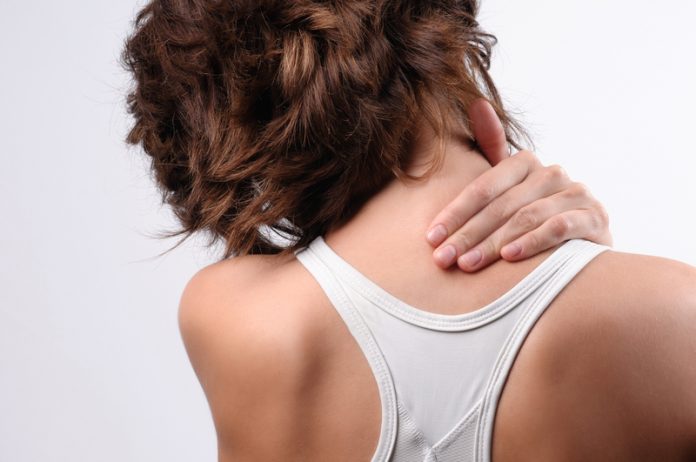Professor Martin Flück and colleagues at Balgrist University Hospital’s Laboratory for Muscle Plasticity investigate possible therapies for weak muscles
It is estimated that 10% of the costs of healthcare in Switzerland (or an equivalent of 500 billion Euros per annum in the EU) associated with lost work are related to injury or dysfunction of the musculoskeletal system. Surgical and subsequent rehabilitative interventions are important part of the therapy that re-establishes musculoskeletal function.
The Laboratory for Muscle Plasticity at Balgrist University Hospital aims to bring light into the underlying mechanisms in skeletal muscle with the goal of translating the findings into more effective clinical applications.
Skeletal muscle plays a major part in control of movement and posture and affects whole body metabolism through its effects on energy expenditure. Affections ranging from simple overuse injury to rupture of tendon and bones, or disease, lead to deconditioning of skeletal muscle as a result of inactivity and damage signals.1 The consequent loss in muscle strength and fatigue resistance exerts a distinct negative impact on the quality of life and may render the affected individuals dependent. In these situations a surgical intervention and rehabilitation may be indicated, yet may come too late as irreversible changes may have resulted.
Focus on muscle plasticity
The Laboratory for Muscle Plasticity investigates the mechanisms that underlie the conditioning of skeletal muscle structure and function during recovery from surgical interventions and rehabilitation. As shown through research on sport performance this process is driven by mechanical and metabolic stimuli. It is mediated through a gene response that instructs adjustments in muscle composition with the repeated impact of exercise during training. In consequence, force production and fatigue resistance of muscle may be improved or maintained.
On the opposite muscle’s functional capacity is reduced in the absence of a physiological stimulus by a reduction in the size of muscle fibres and their content in mitochondria. In fact, while the safety and effectiveness of physical factors for muscle conditioning are well established, the dose-effect relationship between exercise and muscle adaptation is often not fully respected in clinical practice. An example of this biological regulation is the important role of muscle contraction and loading in preserving muscle mass of the bedridden musculoskeletal patient after surgery which otherwise loose muscle mass at a pronounce rate. Genetic factors (so called gene polymorphisms) importantly affect this adaptation.2 This indicates that gene polymorphisms contribute to the inter-individual variability of the response to surgical interventions and rehabilitation.
Research projects
The emphasis of the research team lead by Professor Martin Flück at Balgrist is put on major musculoskeletal affections that arise in the context of the Orthopedic Clinics at Balgrist Hospital. A special focus is put on resolving the contribution of gene polymorphisms to inter-individual differences in the healing of muscle with re-attachment of the ruptured rotator cuff tendon, and the strengthening of skeletal muscle with rehabilitative exercise in patients. The aim is to develop personalised forms of interventions that maximise muscle adaptation. The latter approach is based on our previous work that points out the important exercise-intensity and exercise-type related influence of gene polymorphisms on the muscle response to the leisure-type sports activities.3 This opens a venue to tailor the therapeutically effective exercise intervention for patients which otherwise would demonstrate little plasticity to a generic exercise stimulus and for which pharmaceuticals alone do not work due to the importance of activity-induced muscle metabolism for muscle adaptations.
Patient-led research
By the end of 2015 the laboratory will undertake a major step towards an expansion when it will move in brand new research facilities in what is to become the Balgrist Campus. A key ingredient of this research facility will an open-space landscape where research and development into musculoskeletal medicine is integrated under one roof between clinicians, biologist, engineers, and industry. The facility situates in the vicinity of the orthopedic hospital at Balgrist; thus providing a pipeline for a reality driven approach that re-integrates questions from bedside to bench and return to the patient. The Laboratory for Muscle Plasticity is looking for potential partners that may want to exploit the research options presented in the future Campus in the frame of collaboration.
Bibliography
1 Muscle Injuries in Sports – Müller-Wohlfahrt HW, Ueblacker P,Hänsel L, Garrett WE, Georg Thieme Verlag, ISBN: 9783131624710.
2 Flück M (2013). Diagnostics of endurance performance on the level of gene expression. Sport-Orthopadie – Sport-Traumatologie,29(3):203-213.
3 van Ginkel S, Amami M, Dela F, Niederseer D, Narici MV, Niebauer J, Scheiber P, Müller E, Flück M. Adjustments of muscle capillarity but not mitochondrial protein with skiing in the elderly. Scand J Med Sci Sports. 2014 Sep 28. doi: 10.1111/sms.12324. [Epub ahead of print]
Professor Dr Martin Flück
Laboratory for Muscle Plasticity
Balgrist Campus AG
Tel: 0041 44 510 7350
mflueck@research.balgrist.ch
Please note: this is a commercial profile











